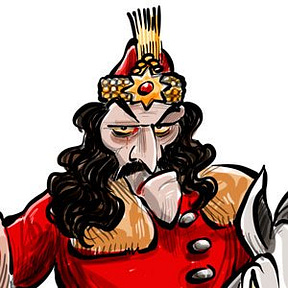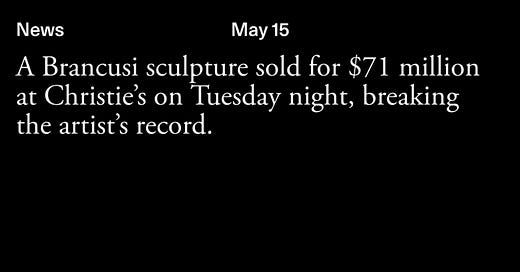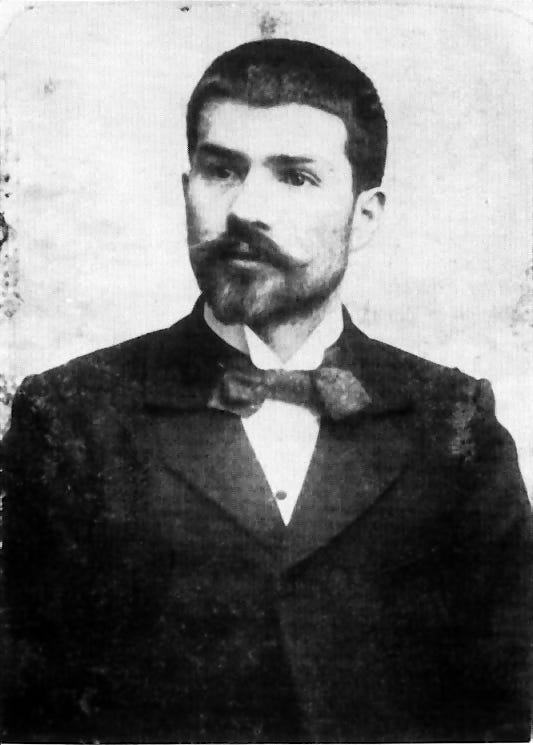Who are you, Mr. Calin Georgescu?
...and how did you managed to pull the wool over the eyes of the MAGA movement?
Over the past couple of weeks I received a lot of requests from my followers on X to share my opinion about the situation of the elections in Romania and in particular about the candidate Calin Georgescu.
I just want to make a couple of things very clear before I start: I am a MAGA Conservative and a two time voter and supporter of Donald Trump. I am a hard core anti-communist and a firm believer in American exceptionalism. And finally, I realize that by posting this essay I will probably trashed and accused of political heresy by some of the very people who are just like me part of the MAGA movement. I am okay with that because unlike them, I have the experience of living in Romania until 1998, I have relatives and friends who live there and I’m constantly in contact with, I read the Romanian news both on social media and papers, and I watch Romanian TV including candidates interviews, press conferences and political debates in my maternal language. In other words I actually know what I'm talking about. As such, I want to share the truth with my American followers about the recent events happening in my former country, even if that will attract the ire of some well intentioned but uninformed detractors.
So let's start with the number one misconception that I'm reading on Twitter/ X: the candidate Calin Georgescu won the elections last November and the Supreme Court of Romania canceled those elections thus depriving the winner of becoming the new Romanian president. This is false, or at least partially false.
So what is false? You see, the Romanian political system is not like the system we have here in the United States. Here in the US we have two major political parties, the Democrat and the Republican. Of course there are other smaller parties like the Libertarian or the Eco-Green or whatever the tree hugging communists are calling themselves these days, but those political movements are insignificant from the standpoint of their numbers and impact they have in during the elections. As such the President is elected by the people through the Electoral College from only one of the two major Parties. It doesn't matter how many people are going to the vote; the candidate who received the most votes is going to win the election even if he is going to win with only 41% of the votes cast during the election, as it actually happened with Woodrow Wilson. In Romania on the other hand, like in many other European countries there are a multitude of political Parties and most of the time each one of the Parties is going to run its own presidential candidate. As such Presidential candidates only obtain somewhere between less then 1% and up to 25% of the votes cast by the people. Considering that the vote presence is less than 60% of the population who has the right to vote, that means that even if a candidate gets 25% of the vote, in reality only about 10% to 17% of the people who have the right to vote are supporting that candidate to become President. In order to avoid the situation at which only a minority of up to 17% of the population decides who the President is going to be, a second round of elections is taking place if none of the multitude of the candidates who run for president is obtaining 50% plus 1 of the total votes cast in the first round of election. In this second round of the election participate only the candidates who came in the 1st and 2nd place in the first round. And what is actually happening is, the candidate who won the first place in the first round doesn't necessarily mean is going to win the second round of election and the prized Presidency in the second round. Why is that you may ask? Because in the second round, former rival candidates and Parties can become allies in order to stop one or another candidates from going over the 50% plus 1 winning margin. For example the candidate who won the first place in the first round with 23% of the vote can be defeated by the candidate who came in the second place with 18% in the first round.
In the first round of the 2024 elections in Romania, Calin Georgescu came into first place with 22.94% of the vote; in the second place came Elena Lasconi with 19.18% of the vote. As I just explained, Calin Georgescu won the first round of the elections but that didn’t mean that he won the Presidency, as many of you my American friends wrongly believe. In fact, if the Supreme Court of Romania didn't decided to stupidly cancel the first round of the elections (that was a bone headed move, I admit), I believe with 99.9% certainty that Georgescu would have lost the second round by a very large margin. Why? Because Elena Lasconi, the candidate that came in the second place in the first round would have had the support of a large pro-European majority coalition in the second round. A coalition formed by her own the center-right USR Party (12.14%), the center Liberal Party (14.39%), the center-left PSD Party (22.7%) and the Party representing the Hungarian minority UDMR (6.4%), while the independent candidate Calin Georgescu only had the support of his (former) AUR Party that came in the 2nd place with only 18% of the vote after the Parliamentary elections last December and the pro-Russian, radical antisemitic and anti-European SOS Party which obtained 5% of the vote. Any of you who know how to do simple adding arithmetic can realize now that Calin Georgescu had absolutely no chance to win the second round of the elections and become President of Romania.
So since we got this misconception out of the way let's continue with a question: who is Mr. Calin Georgescu?
Calin Georgescu was born in 1962 and according to his autobiography has graduated college with a degree in in hydrographic engineering. He says he is an environmental expert and former UN consultant. He claims to be on the right of the political spectrum, a nationalist, a critic of globalism, capitalism and an independent politician who is not aligned with any political Party and cannot be bought by any corporations, billionaires or foreign powers because he only relies on small donations made by his supporter base. Calin Georgescu often likens himself with Donald Trump, claiming that just like the American president he is a Romania-first patriot who cannot be bought, who is persecuted by the Deep State (they call it Parallel State in Romania) for his political beliefs, who is framed by his political enemies as a Russian asset, and who is hated only because puts the interests of his country before the interests other countries and alliances.
That is what he says he is. But let’s dig a little deeper and find out who he really is behind the patriotic facade he put for himself for his nostalgic geriatric communist base and for the gullible foreigners. I know a lot of the things that I'm gonna put out here are going to be new for you because you do not have the same access to information I have being a Romanian and being able to talk to friends and family in the old country, read the social media and the news in Romanian, read Georgescu’s own statements, watch YouTube and TikTok video clips of his interviews and of the news conferences he held.
One of the biggest sources of controversy surrounding Calin Georgescu is his repeat praise for General Ion Antonescu, Romania's World War II era leader who collaborated with Nazi Germany. Antonescu is a highly polarizing figure remembered both for his role in reclaiming territories for Romania from the Soviet Union (which by the way, I don’t fault him for), and for his complicity in the Holocaust which led to the persecution and death of hundreds of of thousands of Romanian Jews and gypsies. Georgescu’s own public statements describing General Antonescu as a “patriot” have drawn harsh criticism from historians, politicians and Romanian Jews.
Georgescu’s conspiracy theories are absolutely bonkers. From Romania being controlled by a cabal of international shadowy Jewish elites who are mercilessly stealing the natural resources of the country while giving nothing back and keeping the population poor, to his claims that the Romanian economy during the Ceausescu regime was better and the population was happier and freer under communism than it is today; from the the really kooky stories about the Dacian ancestors of the Romanian people being in contact with extra-terrestrial visitors who helped them build secret tunnels under the Carpathian Mountains, to picking up Star Trek and Star Wars movie lines, translating them in Romanian and presenting them as his own statements of true scientific facts; from his belief that the Moon landing was faked and the Americans never put a man on the Moon, to the pyramids in Egypt which were not built for the purpose of being Pharaoh tombs, but for being used for something else that will be revealed to humanity in the future; from Romania has the only reserves of mono-atomic gold (wtf is that?) in the world which is an element so rare is not even listed in the Periodical Table, to the beef (meat) unsuspecting people around the world eat not being real beef, but plastic sold by evil corporations as beef; from water (H2O) having a memory of its own, to personally meeting and having conversations with representatives of non-human intelligent species; from the Romanian people ancestors (Dacian) language being the original mother tongue of all European civilizations, language which the Romans stole and adopted themselves calling it Latin, to corporations having plans to kill 7 billion people and turn them into robots. By the way, nobody knows what the Dacian language sounded like and what words their language used because Dacians in their entire history as a people didn’t wrote anything, in stone or papyrus or parchment - apparently writing was against their religion.
Despite portraying himself as having the regular humble working class upbringing during the communist regime of Nicolae Ceausescu, the reality is quite different: his father was an Army officer who later became an agronomist, while his mother worked at the Ministry of Agriculture. His parents home was in the posh Cotroceni neighborhood of the capital Bucharest where the Cotroceni Presidential Palace is today . The only other neighborhood that surpassed Cotroceni in terms of number of communist Party elites per square kilometer was Primaverii (Springtime) where Nicolae Ceausescu had his residential villa. Think of Primaverii as being the Beverly Hills of Romania, while Cotroceni would be Bel Air or Malibu. No regular working class Romanian family would ever have dreamed of living in those areas reserved for the Communist Party elites.
A very damning fact in Calin Georgescu’s past is something that Westerners would overlook because they do not understand how the Romanian communist government severely restricted travel abroad. During those days the only Romanians who could obtain a travel, school or work visa to foreign Western countries where either high ranking Party elites, or people who were working as intel officers or collaborators/informers for Ceausescu’s Secret Police Securitate. Of course there were small numbers of other categories like athletes participating in international competitions, or airline pilots and merchant marine sailors, but these categories where always going in organized groups accompanied by undercover Securitate minders watching their every move in order to prevent defections. If you watched “Moscow On The Hudson” with Robin Williams you’ll know what I’m talking about, it was exactly like the movie portrayed the KGB minders trying to prevent any defectors from leaving the group of Russian circus musicians they were watching over. So considering this highly restrictive traveling conditions one can only wonder how can a fresh college undergrad nobody like Calin Georgescu managed not only to obtain a permit to travel abroad but also to be employed is what he describes himself as “missions” and “assignments” to the UK and the US between 1986 and 1989, during the darkest years of the Ceausescu’s repressive and paranoic anti-Western regime. Any ideas how that may have been possible?
Georgescu paints himself as an anti-globalist, anti-George Soros agenda candidate. One little problem there: from 1990 until 1996 he led the Romanian Ecologist Youth, an NGO funded by George Soros’ Open Society. He also founded and directed another NGO called The National Center For Sustainable Development from 1997 until 2011. This organization primarily received funds from international sources like the European Union and (hold on to your chairs folks!) the United States Agency for International Development USAID.
Despite denying any connections to Russia and its intelligence services FSB and GRU, there is plenty of evidence Georgescu is in fact connected if not with both, but with at least one of them. In my opinion most evidence points to the Russian military GRU intelligence service due to the fact that lots of his most trusted and loyal collaborators are retired high ranking Romanian Army and Securitate officers, many of them graduates of the Military Academy in Moscow during the USSR era. At the time, it was known as a matter of fact that the Soviets were recruiting agents from the officers of the allied armies of the Warsaw Pact who were sent to study in Moscow. This is why Nicolae Ceausescu put most of these officers returning to Romania on job assignments that lacked access to secret information so they could not report useful intel back to Moscow. Well, it turns out that Georgescu is surrounding himself with many of these geriatric Generals minted in the Moscow Military Academy, the oldest one of them being a 95 year old walking and talking mummy who Georgescu considers a hero. Every single time when Georgescu is asked about his views on Russia and Vladimir Putin his responses are extremely favorable, bordering on groveling and slavish. He criticized the NATO missile defense shield at Deveselu in Romania labeling it as a disgrace to diplomacy, which is exactly how Putin himself described it just weeks prior. Following the presidential elections in November 2024 the Supreme Council of National Defense of Romania declassified reports on December 4th 2024 from the Romanian intelligence services SRI, SIE, STS and the MAI, that indicated a coordinate campaign to promote Georgescu’s candidacy involving a foreign state actor implicitly identified as Russia. The SRI reported that over 25,000 inactive TikTok accounts created between 2016 and 2023 were activated just two weeks before the elections to support Georgescu’s candidacy, generating over two million bot comments. The SIE report noted that cyberattacks from over 30 countries including Russia were targeting Romania's electoral infrastructures. These operations were described as having a modus operandi typical of Russian intelligence hybrid tactics. The General Prosecutor's Office investigation revealed that in February 2025 prosecutors found that many TikTok accounts promoting his candidacy were linked to email addresses with the .ru extension which is specific to Russia. Through their IP addresses these .ru accounts were traced to Turkey. This suggests possible coordination from Russia via intermediaries. Investigation also connected the network of .ru accounts to companies like AdNow previously involved in Russian disinformation campaigns including in France and Germany during the pandemic.
There is an old Romanian saying that goes like ” Tell me who your friends are, so I can tell you who you really are”. And there is a long list of Georgescu friends who have proven ties to Russia. I'm going to mention only a couple of them. Horatiu Potra is a former Foreign Legion soldier head of security and close friend of Georgescu. He was photographed in Moscow in 2024 and at the Russian Embassy in Bucharest shortly after. Prosecutors found a plane ticket dated September 6, 2024 from Moscow to Dubai as well as a social media post made by Potra in Moscow, commented on by an associate referencing the infamous Wagner Group. Potra was also found in possession of illegal firearms and explosives. And just hours ago, the same Horatiu Potra was making an appeal to the Romanian military personnel to take the streets and lead an armed coup against the “government traitors”. Another appeal to Georgescu’s supporters just now as I’m writing this article: “Arm yourselves with bats, axes and scythes…those of you who own firearms, get them and take to the streets!”. Marin Burcea AKA “The Sniper” was another one of Georgescu’s bodyguards. He posted pro-Putin messages and images of Chechen soldiers from Ramzan Kadirov’s inner circle on his social media accounts. Another close collaborator named George Telesanu claims to be a member and play an active role in several unnamed Russian organizations. Georgescu himself admitted to meeting infamous Russian ideologue Alexander Dughin considered by many to be “Putin's brain”. This happened at least twice, first time in Vienna and once in an unspecified location. These meetings dated between 2012 and 2017 raise questions about Russian ideological influence on Georgescu, though he claims they were related to the Club of Rome. On March 4, 2025 Russian Foreign Intelligence Service SVR issued a statement explicitly supporting Georgescu and accusing the European Union of blackmailing Romania to block his candidacy. This public stance was strongly rejected by the Romanian authorities including the Prime Minister and the Foreign Ministry. Independent media outlets such as Digi24 and G4Media have detailed links between Georgescu's campaign and the Russian intelligence services. Reportedly, the same network supporting Georgescu was used to promote disinformation in other European countries and it was tied to Russian intelligence teams that worked for Putin and Medvedev.
Perhaps the most damning evidence regarding candidate Calin Georgescu just hit the Romanian social media today. I'm talking about the official Romanian Prosecutors report on the newly filed treason case against several of Georgescu’s closest collaborators and the shite is really really serious. These are not the Prosecutors assumptions but the transcriptions of actual conversations intercepted between Georgescu’s close associates. Among them: Romania should immediately leave NATO and the European Union and become a full member of the Russian Federation and BRICS. In other words, they want to do what not even Stalin dared doing in 1947 after the Red Army occupied Romania: absorbing the whole country into the USSR and making it a Soviet Republic. Another one: NATO troops should not only be kicked out of the country but also forced to pay rent for the period of time they were stationed in Romania. But wait’ there is more: the nationalization of the Romanian capitalist economy. If some people are opposing it, violence and death will leveled against them, according to the plans discussed they discussed. These associates of Georgescu also claim that their movement has 10,000 sympathizers including members who infiltrated the Romanian intelligence services and the army. The leaders of Georgescu’s organization were also intercepted saying they have been talking to high ranking officers in the Police and the Gendarmery so they don't interfere and ruin their plans. What were their immediate plans? Well, starting with the big rally of 2,000,000 people (Georgescu’s voters of course) which would have been the occasion for overthrowing the entire democratic system, dissolve the Parliament and overthrow the existing government. Another intercepted conversation tells us of another Georgescu associate who recently travelled to Moscow. After the visit the meetings he had in Moscow the guy came back with names for the members of Georgescu’s future cabinet. He mentioned even the name for a new Patriarch of the Orthodox Church who would be more accommodating to being subservient to the Moscow patriarchy. He also mentioned three friendly friendly embassies that would support their coup, namely Russia, China and Iran. However judging by the meetings Georgescu’s other collaborators had with foreign representatives, the only embassy they were in contact with was the Russian embassy.
Introducing Roland Schatz, an Austrian magnate and close collaborator of Elena Shmeleva (Putin’s campaign coordinator). Schatz is one of the people who massively contributed financially to Calin Georgescu’s campaign. The duo Schatz-Schmeleva founded the Russian company LLC Media Tenor. What is also very interesting about Schatz is the fact that he is a very vocal Donald Trump hater who supported Kamala Harris during the 2024 US Presidential elections. He is quoted as saying “The damages caused to American political system by Trump are far more serious than those caused by the George W Bush administration” and “Trump is a loser who was fired from his job 4 years ago and has the lowest rate of approval since Jimmy Carter”. Georgescu was affiliated with the United Nations Global Sustainable Index Institute, an NGO entity with no official links to the United Nations founded by Schatz. Schatz offered Georgescu the title of director of his nonprofit organization between July 9, 2016 and December 14, 2016. Georgescu wrote in his resume that he was Executive Director and special adviser to the Director General of the United Nations Office in Geneva. In reality he was only the executive director of Schatz’s NGO. Also Georgescu was never an official member of the Club of Rome as he claimed; instead he was associated with a group with a similar name called Friends Of The Club of Rome In Romania, which has no official connection to the Club Of Rome. Schatz was convicted of embezzlement, bankruptcy fraud, theft of Social Security contributions and employees pensions and false statements in Bonn, Germany in July 2010. Schatz received a 22 month suspended sentence. In 2024 he published an article in a German paper which is part of the LLC Media Tenor Group that he owns, in which he introduced Georgescu as a victim not as an candidate supported by the Kremlin. According to reports, Schatz avoids traveling to Romania for fear of being arrested.
So this is some of the evidence I found against Calin Georgescu. Of course there is more but there is only so much reader attention span that I can abuse without making you skip straight to the end of the article. At the end of this article I just want to make clear there are legitimate grievances that some Romanians who are supporting Georgescu. Among these grievances is the corruption that continues to plague Romania's politics and business environment. For more than 30 years since the fall of Communism, Romania was ruled (with the exception of just a short couple of years) by the socialist PSD Party. Initially founded by second line Ceausescu regime communists under the leadership of Ion Iliescu the PSD resisted democratic reforms and an orientation towards the West for quite a while. After Iliescu and the old guard of the Party was changed with younger, more pro Western elements, foreign investors started to get attracted by opportunities offered by the Romanian government and although corruption remained quite high, the economy started to take off. Romania was accepted in the EU and NATO, workers wages increased and since about 10 years ago Romania’s economy started to catch up with the economies of its more developed former communist States like Poland, Hungary the Czech Republic and the Baltic States. For the past five years or so the Romanian economy has recorded the highest rate of growth in the entire European Union year after year. Despite this performances some categories of Romanian people especially pensioners and those who are less educated have been left behind and are struggling to survive day to day. These people are actually the voting base of Georgescu. They feel left behind and cannot cope with the new realities of a capitalist economy. They miss the job security they had under communism, the daily preordained routine coming from the top down and the way things were when they were young. Even if the job was crappy and they could barely scrap enough savings for 10 or 15 years to buy a car, even if they had to stay hours in line for a piece of bread, even if they had to wait 7 or 8 years for a telephone line to be installed in their shoe box sized apartments, even if the hot water was running for only two hours a week on Sunday mornings, even if they had to carefully watch what they were saying otherwise risked being arrested, even if they froze in their cold damp and black mold infested apartments, these old people still say miss the old communist regime. In my opinion is not that they actually miss the old regime, is just they miss being young. They associate being old with the new capitalist world that is leaving them behind and they cope with this by forgetting all the misery, shortages, terror and backwardness communists imposed on everybody until 1989. So in more than one way the fact that these people are hypnotized by a charlatan like Georgescu is the fault of the bad governance and corruption that plagued Romania more than almost any other Eastern European country since 1989. There is an old saying in Romania that goes like “He jumped from a lake into a deep well”. What that means is actually someone who is in a bad situation might make a decision which is going to bring him in an even worse position than before. These people who support Georgescu are actually trying to make the jump from a bad situation into a far worse one. As for the Romanian Constitutional Court decision to cancel the first round of the election and ban Georgescu from participating again, I already said and I maintain that it was a bad decision. It played into the Russians hands by giving Westerners the impression that democracy is on its last legs in Romania, and weakened they usually excellent relationships between Bucharest and Washington. I don't think the Russians really believed that Georgescu had any chance to actually win the race and become president. Most likely that wasn't their goal because they knew that at their core the overwhelming majority of the of the Romanian people are generally pro Western and in particular pro American. I believe the real goal of Putin’s intelligence operation was to sow mistrust and cast doubt about the viability of the democratic process in Romania. And by God, they succeeded in spades. Just read the thousands of X posts made by American influencers who don’t have the slightest idea about who Calin Georgescu is and comparing his “plight” with the ordeal Trump has been going through at the hands of the deep State since 2016.















